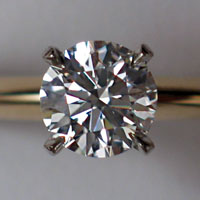Gibbs Energy

Gibbs energy (also known as free enthalpy, Gibbs free energy, Gibbs function or Gibbs potential)
is a state quantity, usually marked with the letter , representing that part of the heat content of the system that can be used to convert it into another form of energy. The rest of the thermal content of the system can only be converted into heat. Its unit in the SI system is the joule (J).
The reason for its introduction was that entropy as a criterion of the arbitrariness of the process is only suitable for adiabatic processes. The newly introduced thermodynamic potential - Gibbs free energy, represents a criterion suitable for more general conditions (for isothermal - isobaric processes).
The free energy (in a system with a constant number of particles) can be expressed by the relation:
,
where is the total heat content of the system, is the thermodynamic temperature (K) and is the state quantity entropy. It follows from the given relationship that the smaller the entropy value, the greater the amount of Gibbs free energy the system has.
Living organisms thus obtain the most usable energy from structurally complex compounds such as polysaccharides, proteins and lipids, which have a low entropy value. On the contrary, a large amount of energy is consumed during the synthesis of these compounds.
Enthalpy H consists of the Gibbs energy (free enthalpy) G and the bound energy that cannot be converted into work at a given temperature.
After substituting for the enthalpy H we get:
where is the internal energy, is the pressure, is the volume within the system, is the thermodynamic temperature and is the enthropy of the system.

During chemical transformations the Gibbs energy content changes between the initial state G1 and the final state G2 of the system:
Failed to parse (syntax error): {\displaystyle ΔG = G2 – G1}
Three situations can occur:
a) G2 < G1 and therefore Failed to parse (syntax error): {\displaystyle ΔG < 0}
In this case, the Gibbs energy of the products is smaller than the Gibbs energy of the substrates, energy is released and it is therefore an exergonic process. This energy can be further converted into work or another type of energy, in the cell, for example, for ATP biosynthesis. In the organism, this situation occurs in the case of catabolic reactions, during which complex compounds are degraded and energy is released.
b) G2 > G1 and therefore Failed to parse (syntax error): {\displaystyle ΔG > 0}
The Gibbs energy of the products has a higher value than the energy of the substrates, so it is an endergonic reaction, in which we have to supply the energy ΔG to the system. Anabolic processes take place in the body, during which complex structures are synthesized, or active transport of substances through the cell membrane.
c) Failed to parse (syntax error): {\displaystyle ΔG = 0}
In this case, there is no change in the energy content of the system, the system is in equilibrium.
Links[edit | edit source]
Literature[edit | edit source]
- MATOUŠ, Bohuslav. Základy lékařské chemie a biochemie. 1. edition. Galén, 2010. 540 pp. ISBN 978-80-7262-702-8.
- KOLEKTIV, Autorů. Gibbs free energy [online]. [cit. 2014-12-08]. <https://en.wikipedia.org/wiki/Gibbs_free_energy>.
- BOJKOVSKÝ, Martin. Gibbsova energie [online]. [cit. 2014-12-08]. <http://fikus.omska.cz/~bojkovsm/termodynamika/gibbsova_energie.html>.











